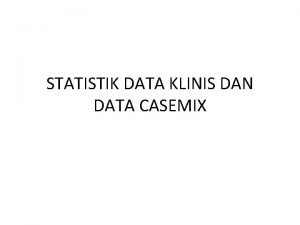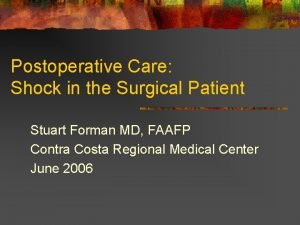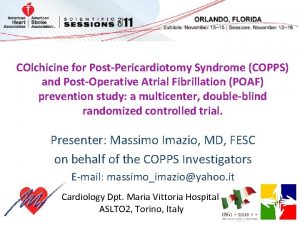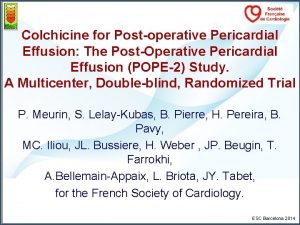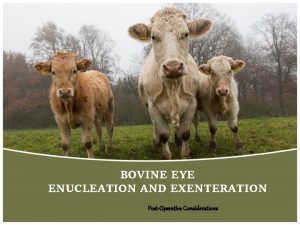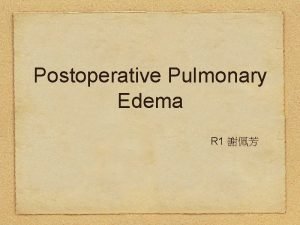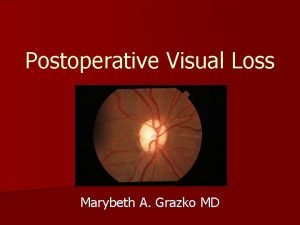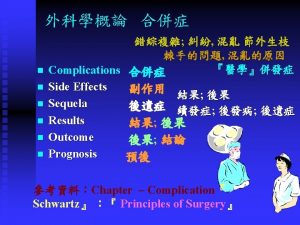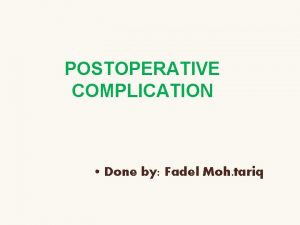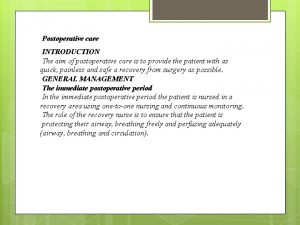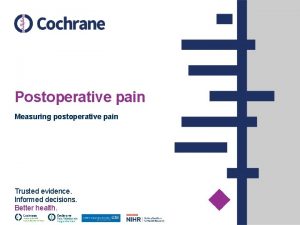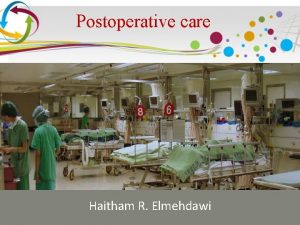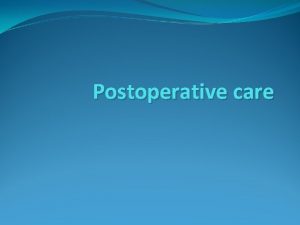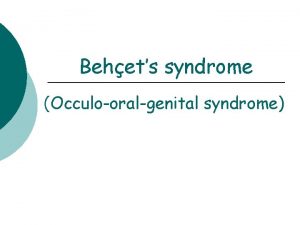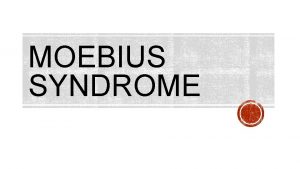Colchicine for prevention of postpericardiotomy syndrome and postoperative
















- Slides: 16

Colchicine for prevention of post-pericardiotomy syndrome and post-operative atrial fibrillation: the COPPS-2 randomized clinical trial. Massimo Imazio, MD, FESC on behalf of the COPPS-2 Investigators Cardiology Dpt. Maria Vittoria Hospital and University of Torino, Italy massimo_imazio@yahoo. it massimo. imazio@unito. it

Disclosures: Ø The COPPS-2 trial was supported by former Azienda Sanitaria 3 of Torino (now ASLTO 2) within the Italian National Health Service. Ø Acarpia (Madeira, Portugal) provided the study drug and placebo as an unrestricted institutional grant and had no role in planning of the study, analysis of data, or writing of the manuscript. Ø FAR. G. IM. srl (Catania, Italy) provided funding to support insurance costs for the trial. Unlabeled use of drugs: Ø Colchicine for PPS and POAF prevention

Background: COPPS Trial 30 25 25. 6 21. 1 22 22. 8 RRR 45% RRR 44% 20 15 10 RRR 42% 12. 8 12 RRR 52% 12. 2 8. 9 Placebo Colchicine 5 0 PPS POAF Post-op Peff Post-op Pleff 180 vs. 180 pts 167 vs. 169 pts 180 vs. 180 pts Eur Heart J. 2010 Nov; 31(22): 2749 -54 Circulation. 2011 Nov 22; 124(21): 2290 -5 Am Heart J. 2011 Sep; 162(3): 527 -32. e 1

PPS and POAF COPPS: PPS incidence 90% in 60 days Am Heart J. 2011 Sep; 162(3): 527 -32. e 1. POAF incidence 70% POAF in ICU Rev Esp Cardiol. 2007; 60(8): 841 -7

COPPS vs. COPPS-2 Am Heart J. 2013 Jul; 166(1): 13 -9

Objective § To determine the efficacy and safety of perioperative administration of oral colchicine to reduce: Ø post-pericardiotomy syndrome (PPS), Ø post-operative AF (POAF), Ø post-operative effusions (pleural and/or pericardial).


Main Outcome Measures PPS within 3 month (primary end point): POAF within 3 months (secondary end point): Post-operative AF was defined as AF lasting for more than 30 seconds. Continuous ECG monitoring at least 5 days post-surgery then daily ECG and symptoms-guided. Post-operative eff. within 3 months (secondary end point): Pericardial and/or Pleural by ultrasonography.

Study Flow diagram

Baseline Data

Results

Kaplan-Meier incidence of post-pericardiotomy syndrome according to treatment groups. Log-rank p=0. 046

Safety Reported data represent the number of affected individuals. No serious adverse events (any fatal or life-threatening event, requiring hospitalization, or significantly or permanently disabling or medically significant, that could have jeopardized the patient or required medical or surgical intervention to prevent an adverse outcome) were reported, as well as myotoxicity, alopecia or other side effects beyond those reported in the table. *= Diarrhea, nausea, cramping, abdominal pain, or vomiting. °= Any elevation of aminotransferase levels above the normal reference range.

Conclusions Ø Among patients undergoing cardiac surgery, the perioperative use of colchicine compared with placebo reduced the incidence of postpericardiotomy syndrome but not of postoperative AF or postoperative effusions. Ø The increased risk of gastrointestinal adverse effects reduced the potential benefits of colchicine in this setting.

Acknowledgment: COPPS-2 Investigators Steering and Executive committee: Massimo Imazio, MD (Chairman and Principal Investigator) (Ospedale Maria Vittoria and University of Torino, Italy), Riccardo Belli, MD (Co-chairman), (Ospedale Maria Vittoria, Torino, Italy), Antonio Brucato, MD (Ospedale Papa Giovanni XXIII, Bergamo, Italy), and Paolo Ferrazzi, MD, (Ospedale Papa Giovanni XXIII, Bergamo, Italy). Data and safety monitoring committee: Yaron Finkelstein, MD (Hospital for Sick Children, Toronto, Canada), Anna Leggieri, MD (Ospedale Maria Vittoria, Torino, Italy), Bernhard Maisch, MD (University of Marburg, Germany), Bongani Mayosi, MD (University of Cape Town, South Africa), Jae K. Oh, Rochester, MD (Mayo Clinic, Rochester, USA), Arsen D. Ristic, MD and Petar Seferovic, MD (University of Belgrade, Serbia). Clinical events committee: Yehuda Adler, MD (Cham Sheba Medical Center, Tel Hashomer and Sackler University, Tel Aviv, Israel), Brian Hoit, MD (Case Western Reserve University and University Hospitals Case Medical Center, Cleveland, USA), David H. Spodick, MD (St Vincent Hospital, Worcester, USA) and Alberto Pullara, MD, (Ospedale Maria Vittoria and University of Torino, Italy). Centers (Italy): Cardiac Surgery and Internal Medicine Department, Ospedale Papa Giovanni XXIII, Bergamo (103 patients enrolled): Antonio Brucato, MD (center principal investigator, PI), Paolo Ferrazzi, MD, Diego Cugola, MD, Davide Cumetti, MD, Silvia Maestroni MD, Francesco Innocente, MD, Anna Valenti, MD; Cardiac Surgery and Rehabilitation, Villa Maria Pia Hospital, Torino (56 patients enrolled): Chiara Comoglio, MD (center PI), Oleksandr Dyrda, MD, Stefania Trimboli, MD, Elisabetta Lardone, MD, Paolo Sorrentino, MD, Ingignoli Biagio, MD, Roberto Valesio, MD, Annarita Zeoli, MD; Cardiology Department, Maria Vittoria Hospital, ASLTO 2 Torino (54 patients enrolled): Massimo Imazio, MD (center PI), Riccardo Belli, MD, Alessandra Chinaglia, MD, Enrico Cecchi, MD, Luisella Coda, MD, Brunella Demichelis, MD, Silvia Ferro, MD, Davide Forno, MD; Cardiac Surgery, Ospedale Niguarda, Milano (34 patients enrolled): Alberto Barosi, MD (center PI), Anna Gandino, MD (center co-PI), Luigi Martinelli, MD, Gianna Attanasio, MD; Cardiac Surgery, ospedale Mauriziano, Torino (27 patients enrolled): Roberto Flocco, MD (center PI), Riccardo Casabona, MD; Cardiology and Cardiac Surgery Department, Ca’ Forcello Hospital, Treviso (26 patients enrolled): Fabio Chirillo, MD (center PI), Marcio Scorsin, MD, Zoran Olivari, MD, Elvio Polesel, MD; Cardiac Surgery, Ospedale San Camillo, Roma (24 patients enrolled): Vincenzo Polizzi, MD (center PI), Emanuela Belmonte, MD, Francesco Musumeci, MD, Amedeo Pergolini, MD; Cardiology Department, Ospedale Regionale San Maurizio, Bolzano and Cardiac Surgery, Ospedale Santa Chiara, Trento (15 patients enrolled): Roberto Cemin, MD (center PI), Angelo Graffigna, MD; Cardiology Department, Ospedale degli Infermi, Rivoli (9 patients enrolled): Stefania Ferrua, MD (center PI), Ferdinando Varbella, MD; Cardiology and Cardiac Surgery Dept of Cardiological Thoracic and Vascular Sciences, University of Padova (9 patients enrolled): Alida L Caforio (center PI), Vincenzo Tarzia (center co-PI), Sabino Iliceto, MD, Gino Gerosa, MD; Cardiology Department, San Giovanni Bosco Hospital, ASLTO 2 Torino (3 patients enrolled): Piera Costanzo, MD (center PI), Massimo Minelli, MD.

Imazio M and coauthors Colchicine for Prevention of Postpericardiotomy Syndrome and Postoperative Atrial Fibrillation: the COPPS-2 Randomized Clinical Trial Published online August 30, 2014 Available at jama. com and on The JAMA Network Reader at mobile. jamanetwork. com
 Primary prevention secondary prevention tertiary prevention
Primary prevention secondary prevention tertiary prevention Bernadette siaton
Bernadette siaton Postoperative nursing management of cataract
Postoperative nursing management of cataract Perioperative definition
Perioperative definition Data klinis
Data klinis Postoperative shock
Postoperative shock Fspos
Fspos Typiska drag för en novell
Typiska drag för en novell Tack för att ni lyssnade bild
Tack för att ni lyssnade bild Returpilarna
Returpilarna Shingelfrisyren
Shingelfrisyren En lathund för arbete med kontinuitetshantering
En lathund för arbete med kontinuitetshantering Underlag för särskild löneskatt på pensionskostnader
Underlag för särskild löneskatt på pensionskostnader Vilotidsbok
Vilotidsbok Sura för anatom
Sura för anatom Förklara densitet för barn
Förklara densitet för barn Datorkunskap för nybörjare
Datorkunskap för nybörjare




